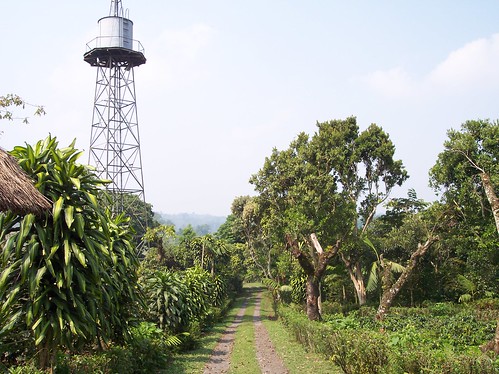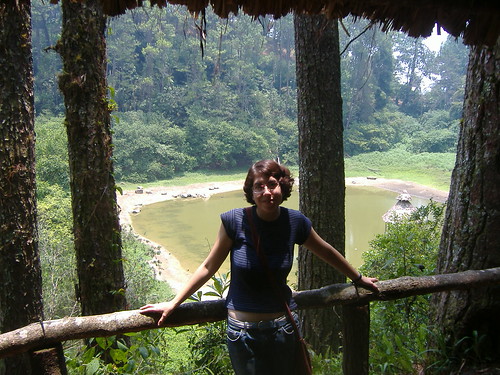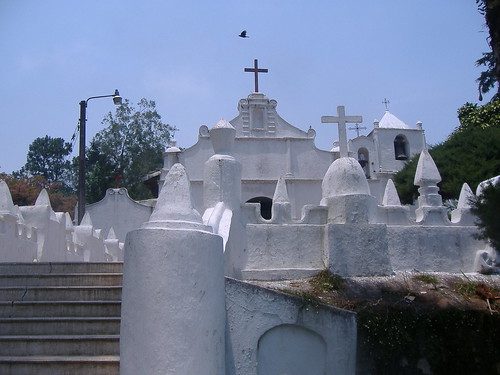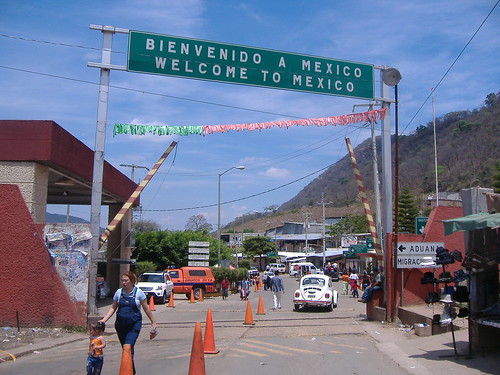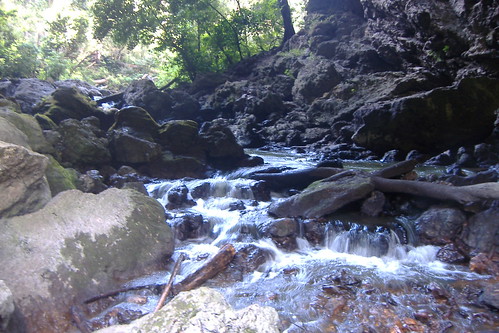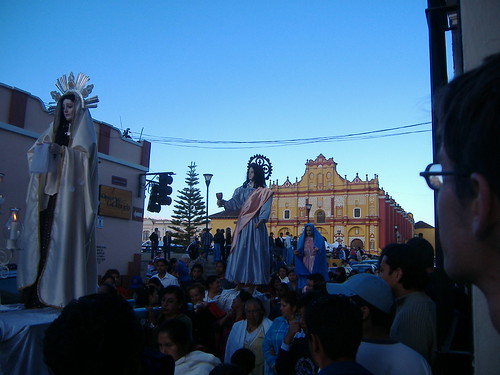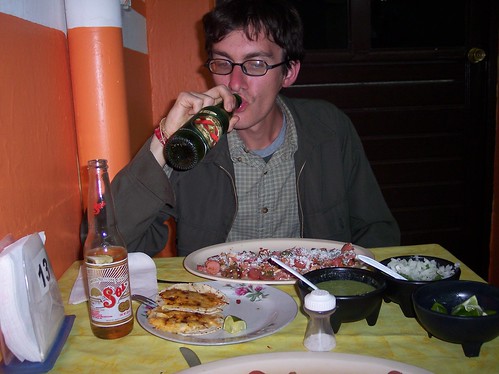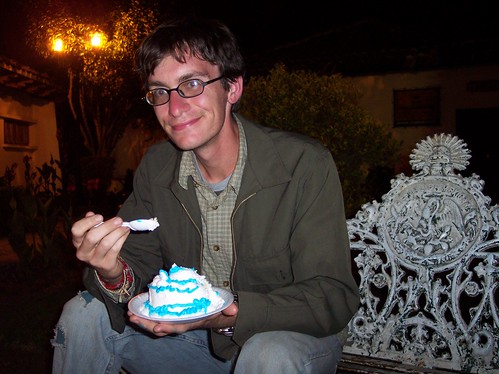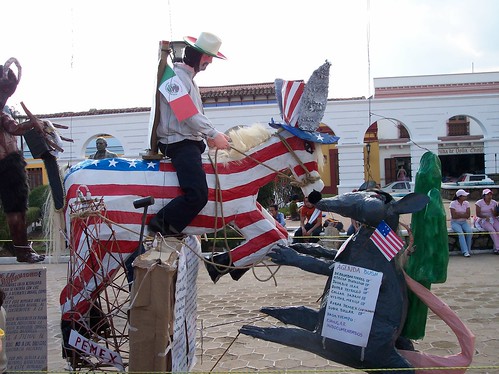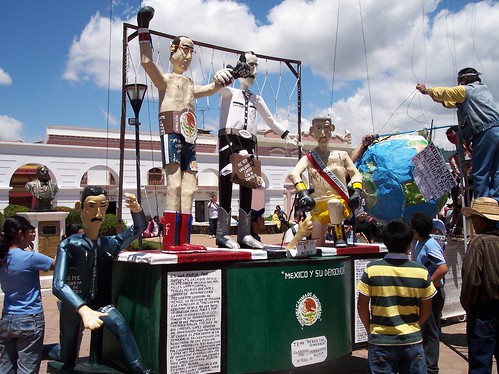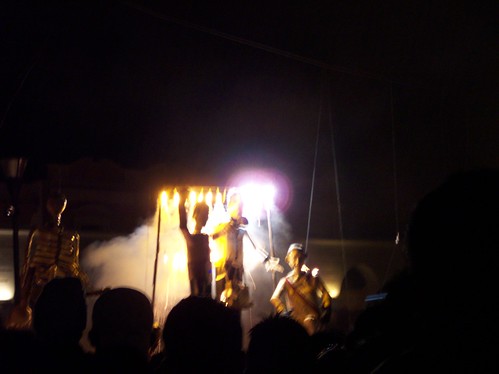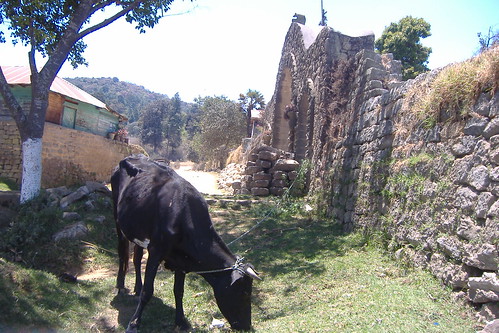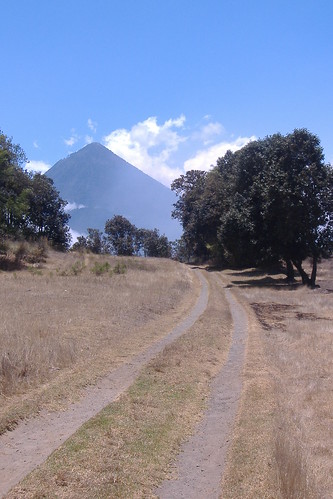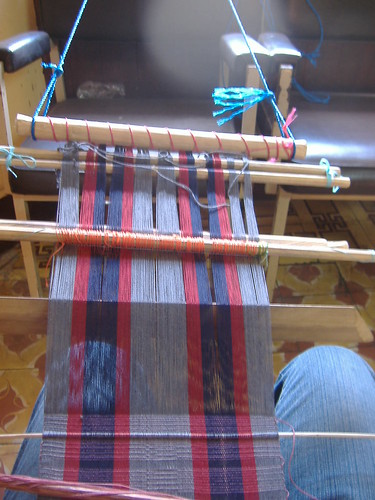After I last wrote in Cobán, Ryan and I went to grab some cheap dinner at a place that promisingly called itself GG Burger (or GG Burguer as their other sign said). We were presented with more meat on our plates than we’d had in quite a while, which wasn’t necessarily a bad thing, but then later Ryan felt sick.. but who knows from what. We’re just always sick. So, the man who worked at GG Burger was surprisingly accommodating and friendly, much more so than any other food-service person had been in Guatemala. And this was a burger joint. He let us pick out which straw we wanted, asked us if we wanted to listen to music or watch tv, and then if the music we were listening to was ok? He asked repeatedly if everything was ok, if we were sure, and later he told us about a special Guatemalan soft drink they produce in Quiché called India Quiché. I’d never seen it before, but he was apparently quite in favor of it. Then he told us we spoke good Spanish and that he once lived in Alabama. Ha. It was random but cool.
The next day we woke up and tried to find transportation that would take us to a small town north of Cobán called Chisec. We eventually did this after it wasn’t in the place our map said it was, and several people gave us directions. The bus terminal consisted solely of microbuses, quite a contrast to the “chicken buses” of the western highlands, and far more comfortable. In fact, we hardly saw any of our old pal buses in the rest of our time in Guatemala, nor did we ride one. But! They appear to be back in Belize, thank goodness.
So we hopped in the micro to Chisec, staring out the window at the green, green hills of the Verapaces. When we arrived in Chisec, we did not know where to find our next transportation which would take us to the Lagunas de Sepalau, these gorgeous natural lagoons 9 km away from town.
We were greeted by un-subtle, curious, amused, giggling stares as we walked through the town… I guess they don’t see too many gringos in their neck of the woods.
The only mode of transportation we could find were taxis, but they were charging 60Q for a ride there which seemed rather expensive for the short ride. Well, luckily we ran into 2 other foreigner girls who were looking to go as well. We split a cab and it was cheaper because we were now four people instead of just two. They were friendly enough, one girl more than the other, but as we began exploring the lagunas, they eventually just left, and we’re still not sure how they got back. I guess they were less than impressed after just visiting Semuc Champey, which is supposed to be just beautiful and amazing, but we didn’t have the time or funds to get there really. Next time.
My first glance of the laguna instantly recalled in my mind the limestone quarries just outside of Bloomington—except instead of being manmade these were natural and in the tropics. There was next to no one there, just one indigenous Q’eqchí family who again, just stared at us. We continued our exploration of the area, leading us to another section of the first lake, and a second lake which was a little more difficult to reach. The heat being rather intense, we decided we were ready for a swim in the first lake. It felt so good to plunge into that pretty blue water, surrounded by rock and jungle on all sides. We ate our peanut butter mango chutney sandwiches and a zapote, swam a little more, and headed back to the road after several hours.
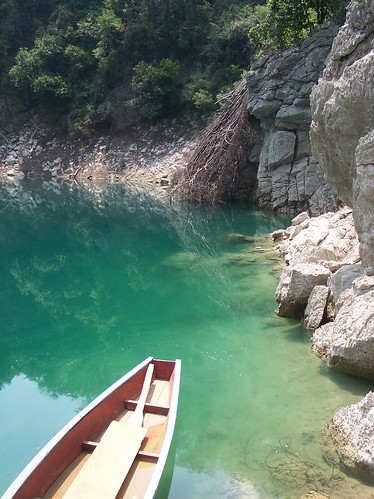
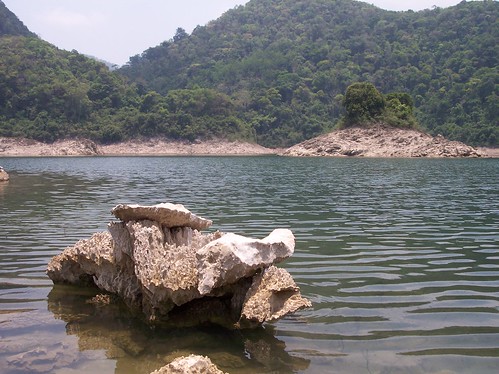
We waited by the side of the small gravel dirt road for several minutes in the heat, and then decided to just start walking the 9 km walk… this was rough. We passed more indigenous families who were simply not used to seeing white people and they would either stare, stare and look at us suspiciously, say “buenas tardes”, and the younger ones would just giggle.
So thankfully a microbus pulled up to us on the side of the road eventually, so we hopped in and got a ride back to town, for only 2Q each. Yes. We then got back into Cobán a few hours later where we just relaxed, ate some tacos 3x10, (well I got a burrito) and then went back to the room where I saw a giant cockroach while Ryan was in the bathroom. It actually ran across the bed while I was turning on the computer and it made me jump. It then flew onto the wall by the door (yes it flew too!) and I opened the door to see if it’d like to fly out? And then I moved to the opposite side of the room. THEN! It flew straight at me, making its attack. I audibly screamed, and I think the man outside on the phone heard me, but he didn’t come to my aid, jerk. Finally, Ryan came back and I begged him to kill it while I wait outside. He swung at it with his shoe and it ran to the corner where we lost sight of it forever. Who knows where it went. It’s probably still out there somewhere, waiting for me. Sigh.
The next day we woke up, ready to continue on with our journey to our next stop: Lívingston. To do this, we had to change buses several times.. first we took the bus from Cobán, to a junction in the eastern Guatemalan desert town of El Rancho. There we basically just waited by the side of the road like hitchhikers for a few minutes, waiting for some kind of bus to pass. Eventually one came that said no, they were not going to Puerto Barrios on the coast, but we could go with them and eventually there’d be more transportation to Barrios… confused and annoyed we got on the micro and got off at Río Hondo where the road split. Sure enough, as soon as we got out, we were shuttled into a fairly nice direct bus on its way to Puerto Barrios. This was a long bus ride where the landscape changed rather quickly from desert to very tropical vegetation as we neared the Caribbean.
Once we got to Puerto Barrios, we dragged our cumbersome bags to the where my map said we had to go to get a lancha to Lívingston. So let me explain, Lívingston, a small town of only 6,000 people is on the Caribbean coast of Guatemala, and only accessible by boat. The greater population consists of Garífuna people, a mix of African and Carib people originally coming from the island of St. Vincent. It’s an interesting history, if you’re curious to learn more. So, the boat ride to the town was probably about 30 minutes and we got more than a little wet in the process. It was finally around 6:00 pm or so when we arrived in Lívingston, and the second we were off the boat, we were of course hassled by various men, this time Garífuna people speaking in English and pounding fists with us and telling us about these hotel deals. Great. We eventually found a place to stay, calm and quaint, called, I kid you not, Hotel California. Yes. They also spoke to us in English—I think their native language was a Creole English, which is common in Lívinston. We didn’t do much at night as we were pretty tired from the long day of travel, but we did manage to get some amazing dinner which consisted of the town’s specialty: tapado—a stew of sorts full of all sorts of seafood, made with coconut milk, plantains. It was scrumptious and worth every penny. We then ran into this man in the street who was riding a bike and called himself Alexander the Great. He said he had no money and was starving and just wanted to eat some empanadas from the street so Ryan was nice and gave him a little bit of cash. The whole place was kind of disappointing to us, though, overall. People were poor and you could tell the only work was tourism and fishing. There were many tourists there who wanted to soak up the Caribbean atmosphere and drink alcohol out of coconuts. We were going to stick around one more day, but a daytrip we were thinking of taking to Siete Altares, this group of waterfalls, turned out to not be something we wanted to do, as it still wasn’t the rainy season and they weren’t too impressive right now apparently….
Soooo.. we decided to just leave Lívingston the next day as there really wasn’t much to do there apart from being lazy, eating, drinking, and being bothered by people. In the morning we signed up for a boat ride tour down the Río Dulce, the other way you get away from Lívingston. The scenery itself was stunning—tropical birds flying about, small homes around the lake and river, jungles, rocks, and lily pads. The boat made two stops to let us off at a little cooperative which was kind of interesting, and then again at some hot springs which really didn’t impress us too much after being to Fuentes Georginas near Xela. Oh well. And even though it was gorgeous, I was a little unimpressed overall with the tour itself.. the guide didn’t go into detail about anything only occasionally saying something like : “This is called Island of the Birds.”—things like that.

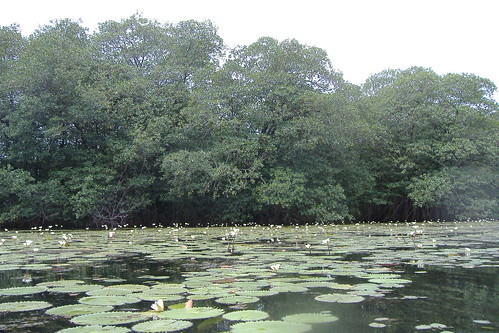
When we got off the boat we were in Río Dulce town, a not too special place where you pick up transit to go somewhere else. We ate our last Guatemalan breakfasts, paying with credit cards. Our bus onto Flores was supposed to leave at 2:00, but arrived nearly an hour late due to some road blockages. Then, once the bus finally did come there were no seats and we were forced to stand at the very front, even though this was a “nice” bus. But, about 20 minutes down the road, we were all forced to get off so some policemen could check everyone’s identification. Now, this made me nervous as our Guatemalan visas had expired several days earlier. Images of being escorted to the border to be deported flitted through my mind, but he just looked at the passport and handed it back to me. Either he didn’t notice or didn’t care. We were detained there for 10 minutes nearly, and eventually went back on our way, and we were able to get a seat since everyone had moved around. Yay. But… maybe another hour later the bus was forced to stop again and we all had to get out, this time to make sure we didn’t have any fruit we were taking in to the Péten department that might contain some kind of mosquito.. awesome. They didn’t even really check anyone’s bag, just felt the outside, with their magic fruit-detecting hands and let us get back on the bus, where some jerk picked up my backpack and put it in an overhead bin above him, and took our seats.. jerk. So I found some seat in the back and Ryan had to stand up for the rest of the trip through the jungle. With all these stops and delays, the ride took an hour longer than it should have, and we didn’t get into Santa Elena until nightfall, which worried us a little. We don’t like to travel after dark down here, especially when we’re unfamiliar with a place.
But as soon as we jumped off the bus and retrieved our bags, several cab drivers were in our face asking if we needed a ride to Flores. Yes, we did. He said he’d take us for only 5Q each which sounded good to us. The catch was that he worked for this hostel called Los Amigos and he kept telling us how good it was and how we had to stay there. We don’t like to be pushed into anything, so we decided to beat him at his own game. He told us it goes 50Q for one night, and then since he just assumed we don’t know Spanish even though we’d been speaking to him in fluent Spanish the whole time, he decided to say, “feefty quetzales” No kidding, thanks, bud. Then he stopped at this place called San Juan Travel and was like, here you can buy your tickets to Tikal, for tomorrow. Go buy them now. And we were like, No, not now, creep. (except not quite that mean). When we got into Flores, he again brilliantly announced “La ciudad” (the city), cause we’re such dumb tourists we couldn’t have figured that out for ourselves either. Then he drove us straight to this hostel Los Amigos where we didn’t want to go at all because I don’t trust any place that operates in such a sleazy manner. He rang the doorbell of the hostel and pulled our bags out for us. Then he told us we owed him 15Q, to which we replied, no… you said 10, to which he just stared at us evilly for 5 seconds, and gave us the right amount of change back. We then just walked away. Ha! Take that, you unscrupulous sleazeball. Like we would have forgotten how much he said the cab ride was, or we wouldn’t care cause we’re white and just have loads of money. Ugh. Welcome to Flores.
So Flores itself was rather pretty.
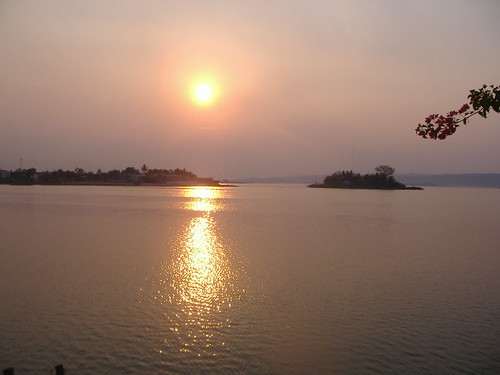
It’s a small town set on an island at the southern end of Lake Petén Itzá. It has an interesting history as well and I was excited to see it. Unfortunately, it was far more obnoxiously touristy than I was ready for, on par with Antigua if not worse. Everything was more expensive there. The cheapest internet we could find was 10Q/hr which was ridiculous to us as we routinely only paid 3Q/hr in Xela. They also didn’t sell bags of water, and lots of things were written in English, including the dinner menu handed to us that night at the Maya Princess Café. I had to translate it, ordering completely in Spanish. I was beginning to get utterly sick of people in the town looking at you and jumping to the conclusion that you don’t speak Spanish, but English. It’s really racist in a way and I was tired of it. This was not how I wanted to end my final days in the country, but I didn’t have a choice really. It we could go back we probably would have stayed in nearby town El Remate which has less tourists, I think.
The reason most people come to Flores, us included, is to see the magnificent Mayan ruins of Tikal which is only about an hour away. The next morning a shuttle picked us up (pretty much the only way to get there) at 6 am for Tikal, since it’s best to get there early before it’s super crowded and the sun’s rays are too oppressive. And indeed, compared to the crowds of later in the day, there were few people at the ruins when we arrived. Since the only Mayan ruins we’d seen so far consisted of Zaculeu and Iximché, we really were very impressed with Tikal, and the jungle setting made it that much more spectacular. We climbed many pyramids, sweated, and heard a lot of English from American families, (including one woman we overheard ask the water vendor if he accepted Belize dollars, in English. Yes. We hate our own kind. I really liked the Grand Plaza, the view from Temple IV, unfortunately being worked on, and our hike out to Temple VI deep in the jungle where few people were. So, here are some pictures, they speak more than I can:
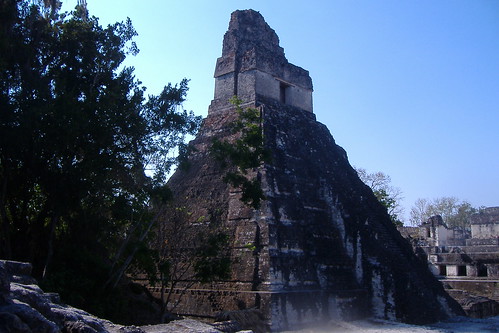
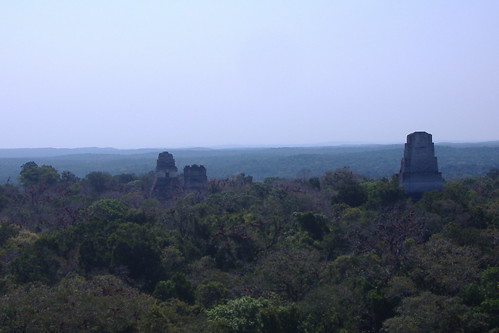
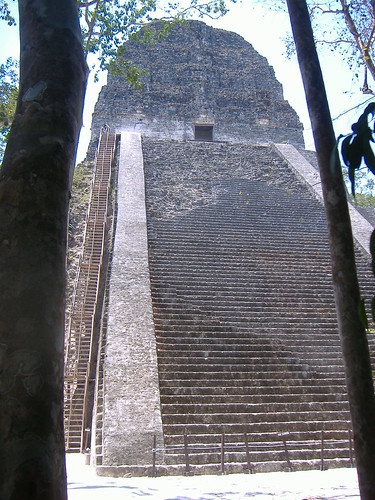
There are still many more pictures… check out the flickr site. There were also fun animals about like monkeys, birds, and ocellated turkeys, Ryan stalked one for a while.
Exhausted by 2 pm, we caught our shuttle back to Flores where we relaxed, walking around the lake at sunset and eating some dinner where sure enough the waiter first addressed us in English, saying “Ready?” to which we just stared at him dumbfounded and then he said, “¿Listos?” to which we said, Sí, and the rest continued in Spanish. Ugh, so frustrating. I really didn’t feel like I was in Guatemala anymore, and I’m afraid these people that just come here for a few days to see Tikal have no idea what the country’s like either.. but maybe they don’t care. We then gave in for an expensive half hour of internet to which the guy said, “¿Hablan español o inglés?” to which I said “los dos” and then he started speaking in English! Even though it wasn’t his native language and we clearly spoke good Spanish. Ugh, whatever. It was annoying. I don’t get it. Anyway, after all these frustrations, we really realized how good we had it in Xela and in the western highlands in general..
This morning we woke up with every intention to just get out of the country that was beginning to grate on us (plus our visa had been expired for 10 days already)… so we jumped into Belize a day early. To do this we had to catch an embarrassing tuk tuk cab to Santa Elena and from there a micro to the border. The border crossing went over much smoother than I expected, the Guatemalan customs man being much friendlier than the prior one. He almost looked sad when he told us we had to pay the 100Q fine for going over our visa. The money changers on the Guatemalan side of things were also pretty friendly people giving us advice and decent exchange rates. At least we left on a last minute good note.. ha. Once into Belize, things seemed calmer, a little less trashier—people still gave us English, but it was OK this time because it’s the official language of the country and all, which is a little strange to adjust to honestly. But we won’t have to for long as we’ll only be here three days, and then we’ll be back into Spanish-heavy Mexico.
The only way to get to our current destination of San Ignacio de Cayo was by taxi, which reluctantly shelled out for. Things are a tad more expensive here with their Belizean dollars (which is just the USD multiplied by 2, easy). but we’re enjoying the change. Our hotel room has actual nice pillows and a little balcony which we’ve been taking advantage of, relaxing. We ate at this delicious Sri Lankan restaurant for lunch, where they actually gave us tiny glasses of water for free. There are also lots of Chinese people which means there are Chinese restaurants. Belize is strange yet familiar. The town of San Ignacio itself seems fairly laid back (much like the majority of the tiny country I’m guessing) and fairly cute and quaint, except midday when it gets way too hot and you have to take a siesta. Oof. So we’re going to stay here one more night, continue decompressing after this frustrating busy week, and then head up to Corozal where we will spend just one night. Then, on Sunday, we’ll be in Mexico!! (again). I had a dream a few nights ago that I got back to the US, but two weeks early and somehow we had just forgotten to see the places in Mexico we were going to visit.. so we were going to go back and see them. It was strange. Ay, if you’ve read all this you must be magical.
